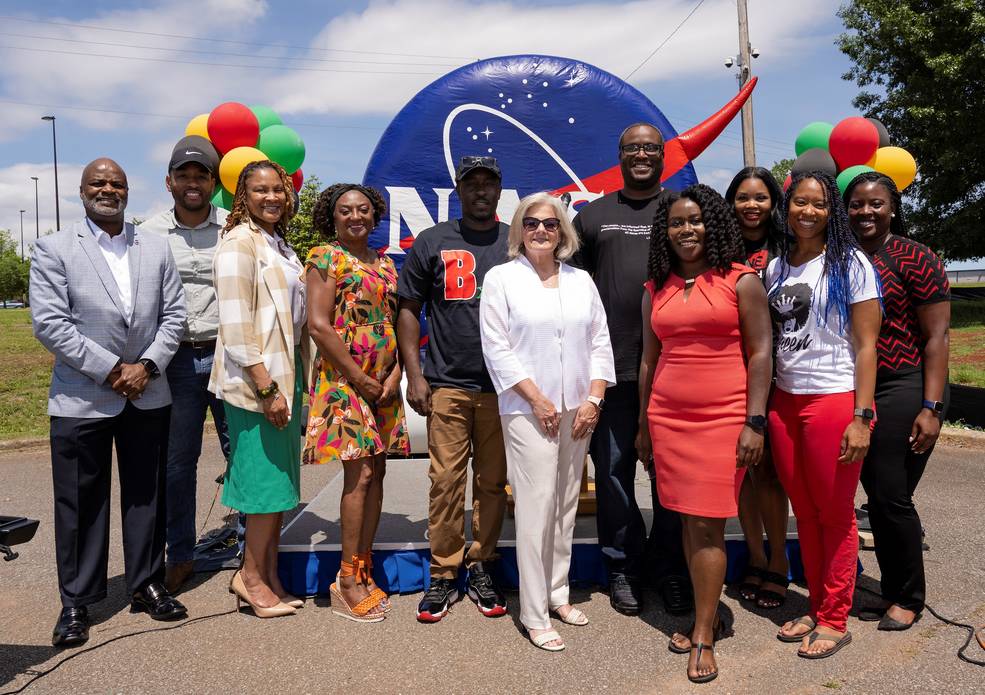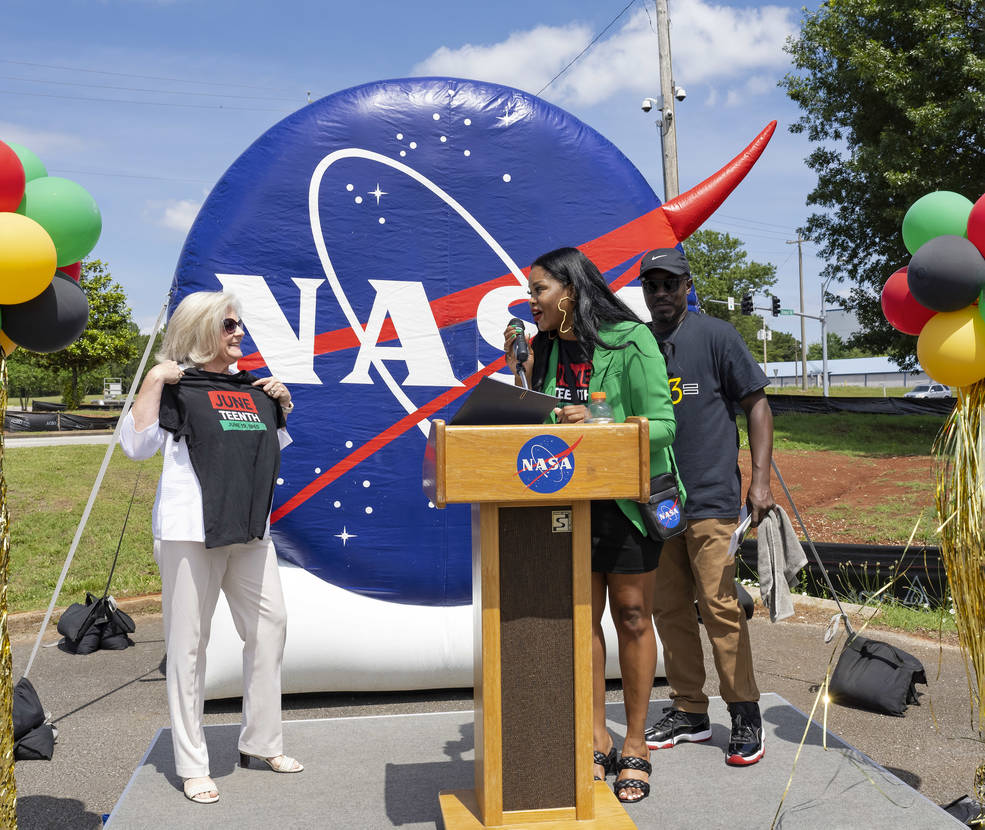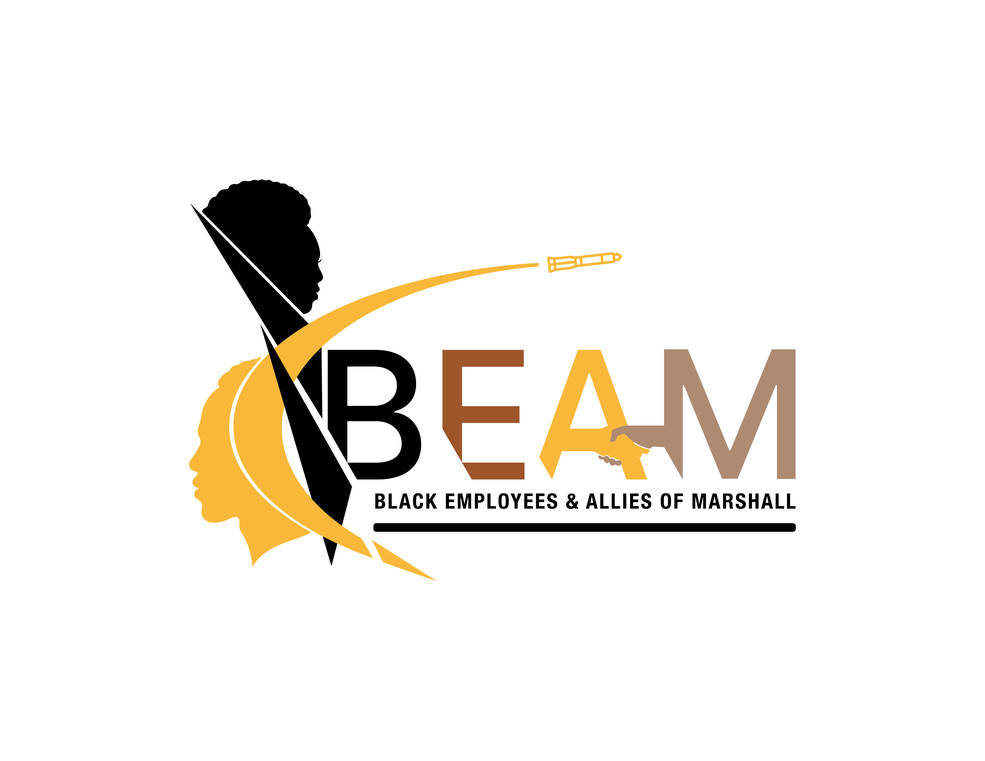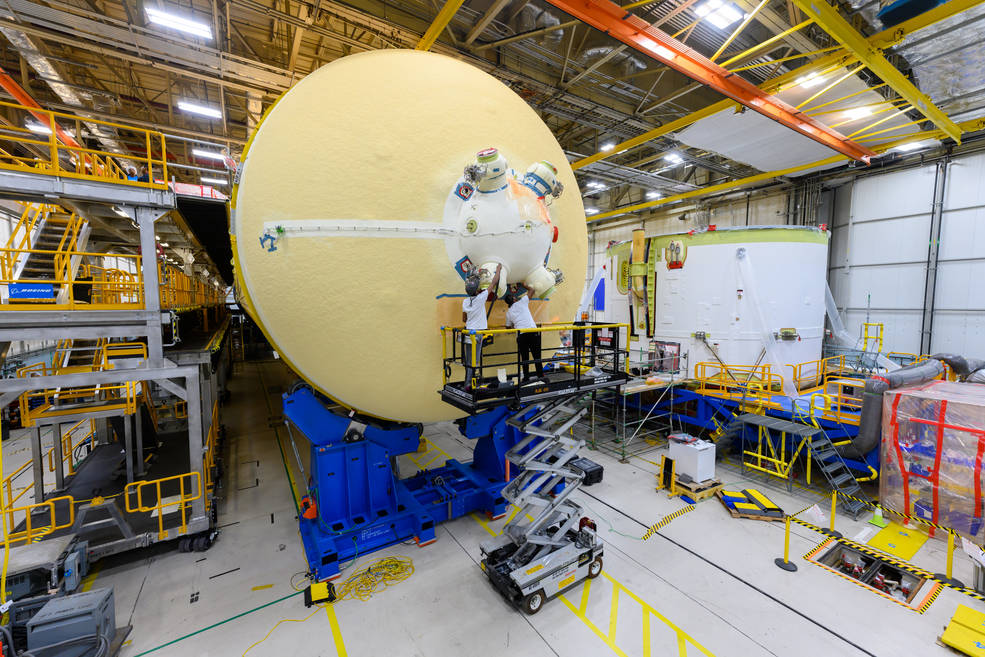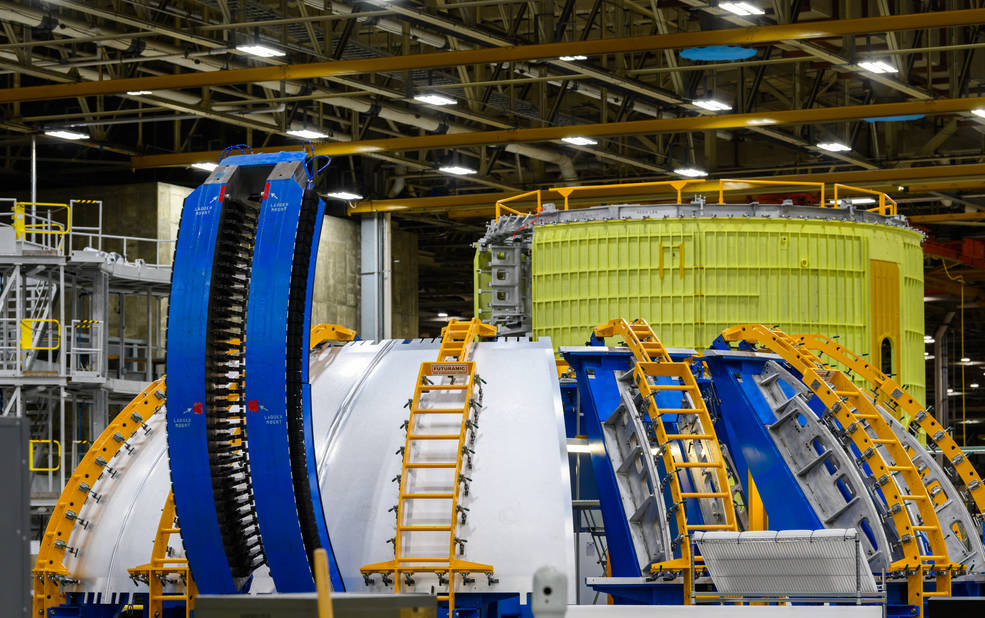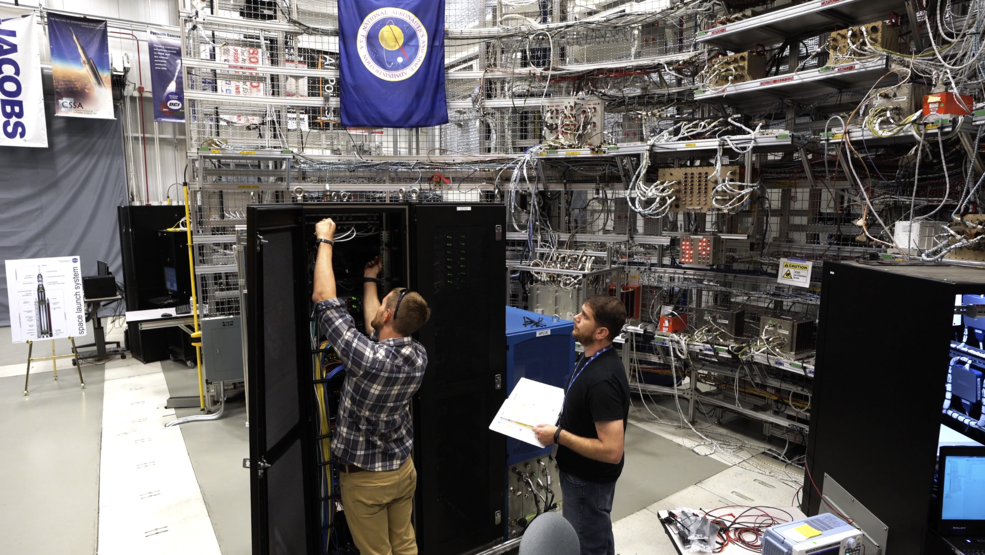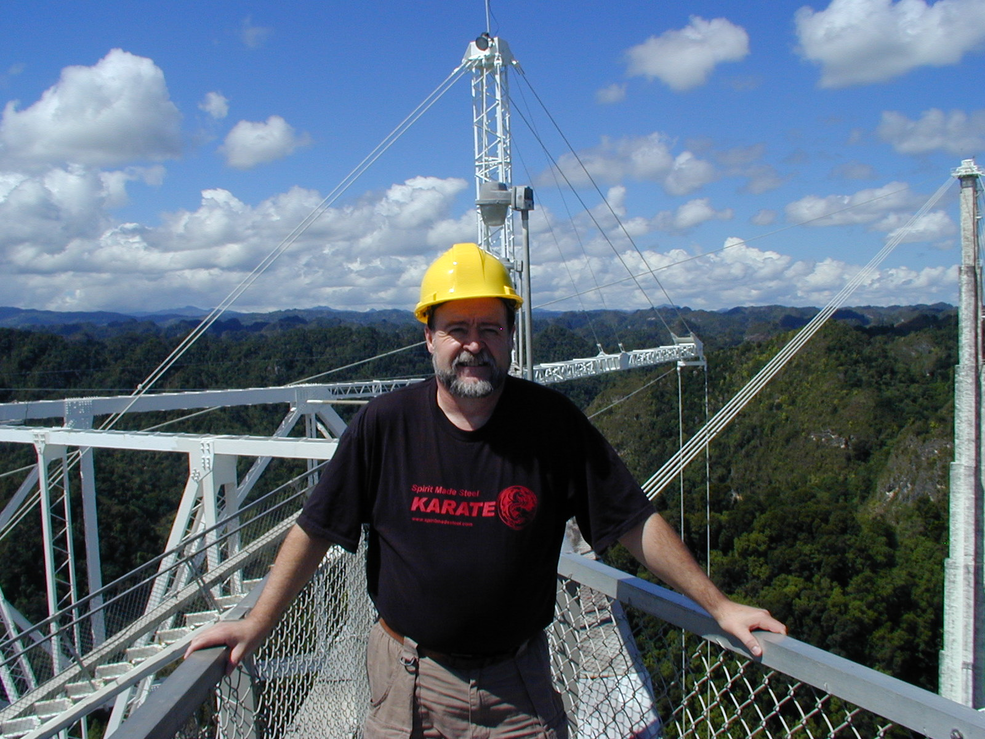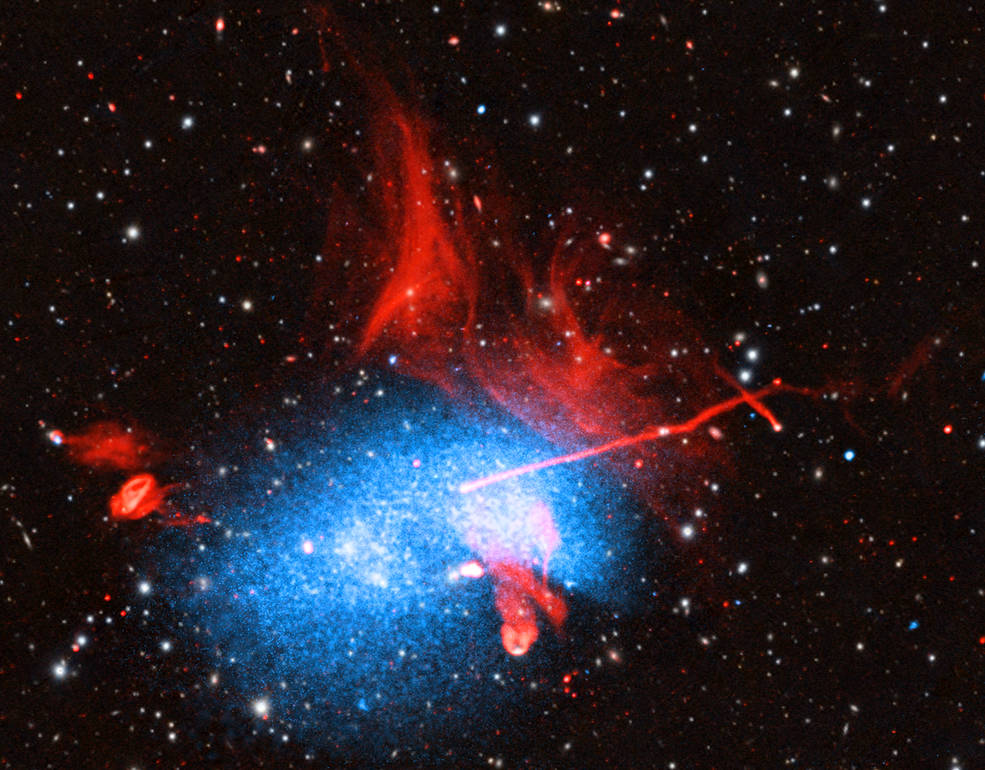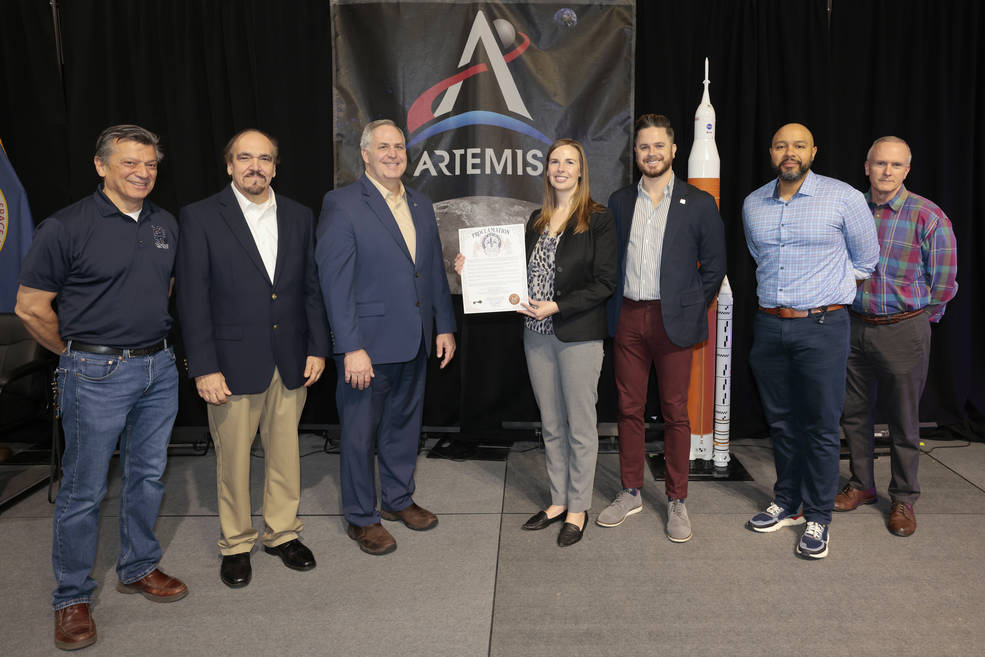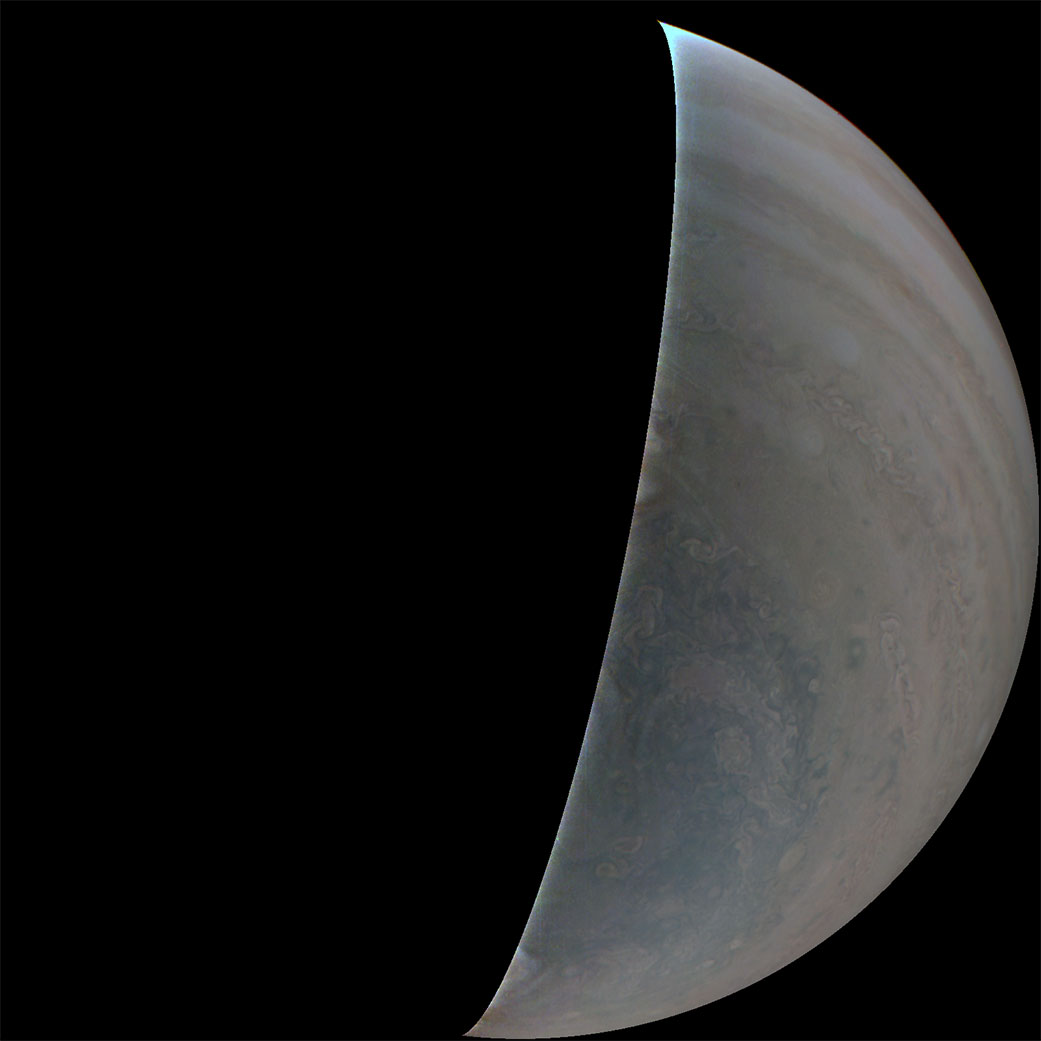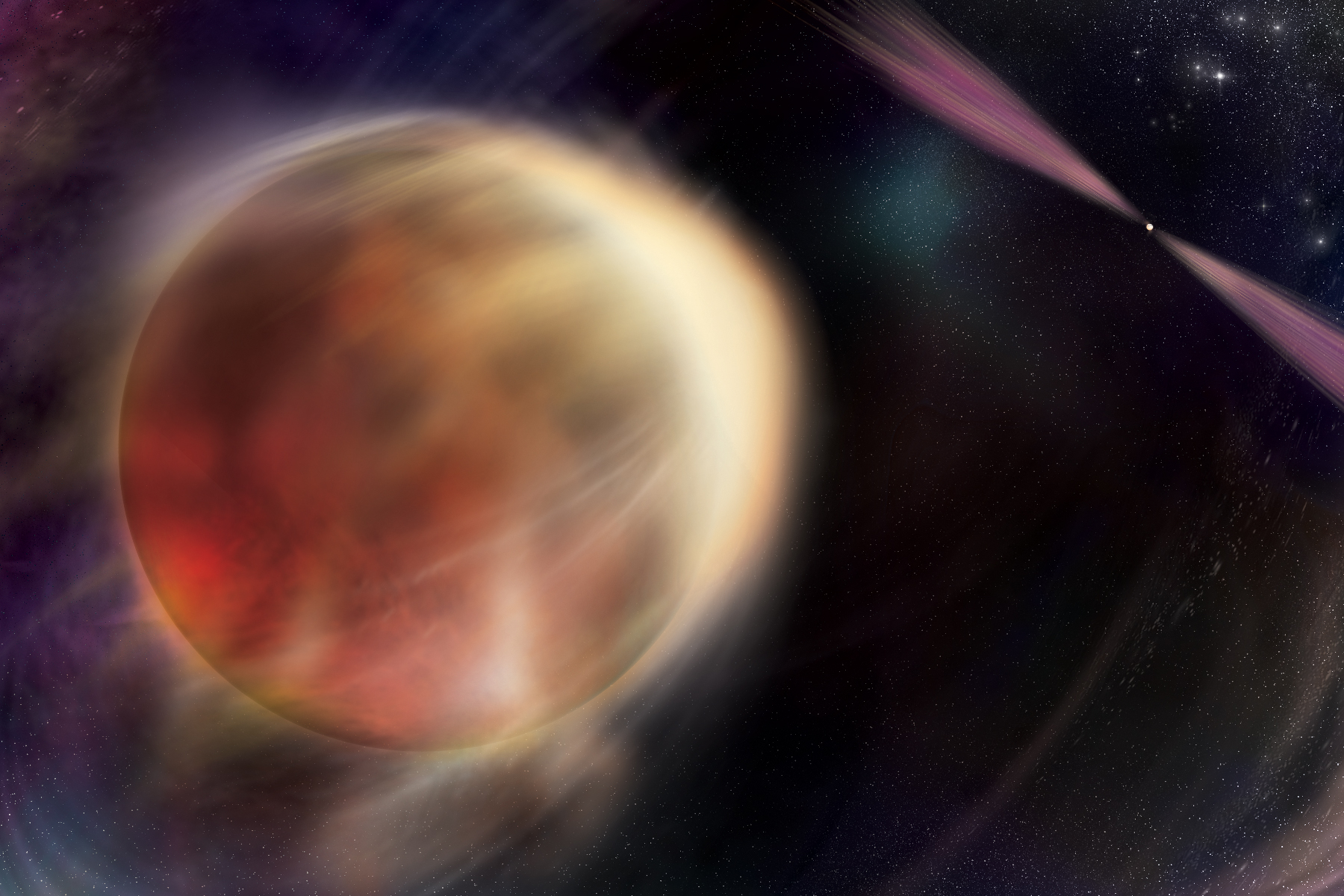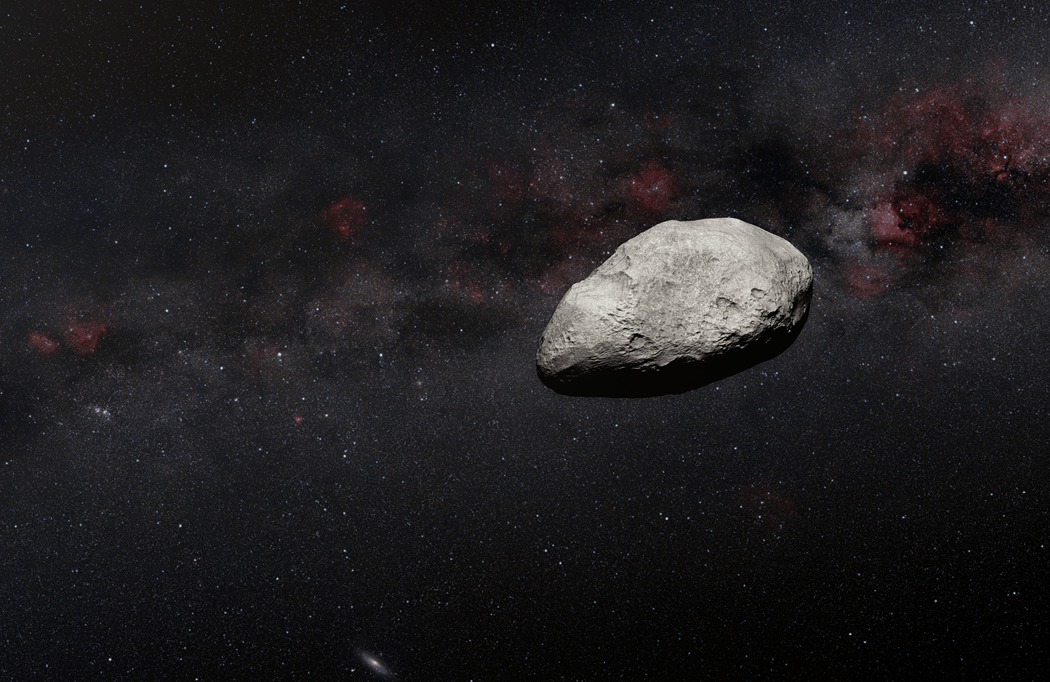The Marshall Star for February 8, 2023.
In This Week’s Star
- Marshall’s BEAM Group Plans Black History Celebrations Beyond February
- Progress Underway on Moon Rockets for NASA’s Crewed Artemis Missions
- Jeff Luvall: A NASA Quest for “Kool”
- Chandra: Untangling a Knot of Galaxy Clusters
- New Orleans Recognizes Michoud, Artemis with Proclamation
- Juno Team Assessing Camera After 48th Flyby of Jupiter
- 50 States for Artemis: Ground Support and Engineering
- Fermi Detects First Gamma-Ray Eclipses From ‘Spider’ Star Systems
- Webb Detects Extremely Small Main Belt Asteroid
- Spacewalk Positioning the Space Station for More Power Highlighted on ‘This Week at NASA’
Marshall’s BEAM Group Plans Black History Celebrations Beyond February
By Hannah Maginot
Throughout this month, team members across NASA’s Marshall Space Flight Center will gather to celebrate Black History Month. But one group is making sure the connections don’t stop there.
The Black Employees & Allies of Marshall (BEAM) Resource Group, in partnership with Marshall’s Office of Diversity and Equal Opportunity (ODEO), is kicking off several ongoing events this month to encourage team members to get involved and give back. The theme of this year’s Black History Month is “#BLACK, Building a Legacy of Achievement, Connection, and Knowledge.”
BEAM is designed to promote career advancement for African American team members at Marshall, while proposing solutions for their constituency, providing insight into recruitment barriers, and participating in outreach to inspire future generations of NASA team members. These efforts actively support the NASA Equity Plan, which strives to anchor diversity and equity as a core component of every NASA mission and to identify and remove career barriers that hinder historically underserved and underrepresented communities.
“I’m passionate about this work,” said ODEO Equal Opportunity Specialist Amanda Otieno, who also serves as African American Special Emphasis Program Manager. “I’ve always been an advocate, and this role allows me to advocate for those who have been historically overlooked.”
Otieno, along with BEAM co-chairs Aquita Wherry, budget analyst in Marshall’s Human Exploration Development & Operations Office, and Nick Benjamin, payload operations director, have planned several events this month, starting with a social from 5-7 p.m. Feb. 9, at The Foundation Coffeehouse, 4701 Meridian St. N., Suite K, Huntsville. All are welcome to attend what BEAM leaders hope will become a quarterly event this year.
“I love that we are always making new connections,” Wherry said. “We welcome allies and often work with other employee resource groups to foster community and help the African American community at Marshall learn about professional opportunities.”
This year, BEAM is also launching a quarterly series of Lunch and Learn events. The first is scheduled for Feb. 16 and will feature Angelia Walker, director of the Spacecraft and Vehicle Systems Department at Marshall, and Van Strickland, SLS program operations manager at Marshall. The senior leaders will share their professional journeys and encourage BEAM members as they navigate building careers at NASA. BEAM will also help host a hybrid Black History Month program on Feb. 22.
With one year as co-chair under his belt, Benjamin has big goals for BEAM in 2023, starting with investing in the future of the African American workforce at Marshall.
“We want to make sure we’re represented at the table and can see the strides we’re making,” he said.
BEAM plans to develop a mentorship program in which senior leaders can invest in early- and mid-career team members. The group is also looking to grow its network of outreach contacts, particularly in the Alabama school systems and even beyond,
“I just want to encourage anybody who wants to participate to reach out and get involved,” Benjamin said. “We’re working to make sure everything we do is sustainable and will have lasting impact for our members and all of Marshall.”
Supporting BEAM can be as simple as sporting a T-shirt featuring their logo, designed by Marshall graphic designer and photographer Charles Beason. To order a shirt, email your name, size and whether you’d like a white or black shirt to itstheextra@gmail.com.
In addition to BEAM, Marshall supports a variety of employee resource groups. Team members also are encouraged to check out the monthly “Talk Equity, Diversity, & Inclusion” newsletter on Inside Marshall.
Upcoming BEAM Events
- BEAM Social – 5-7 p.m., Feb. 9, The Foundation Coffeehouse, 4701 Meridian St. N., Suite K, Huntsville.
- Lunch and Learn, featuring Angelia Walker and Van Strickland – 11 a.m.-noon, Feb. 16, Building 4203, conference room 6220.
- Black History Month Program – 10-11 a.m., Feb. 22, Building 4203, conference room 6220 and via Teams.
Maginot, a Media Fusion employee, supports Marshall’s Office of Strategic Analysis & Communications.
Progress Underway on Moon Rockets for NASA’s Crewed Artemis Missions
By Alyssa Lee
NASA and its partners across the country are continuing to make progress on the crewed Artemis missions with hardware for NASA’s Space Launch System (SLS) rockets for Artemis II, III, and IV already in various phases of production, assembly, and testing.
SLS proved to be the world’s most powerful rocket on Nov. 16, 2022, when its two solid rocket boosters and four RS-25 engines produced more than 8.8 million pounds of thrust at liftoff to send NASA’s Orion spacecraft beyond the Moon and back on Artemis I. Data from the first flight of SLS is helping engineers build confidence in the rocket’s systems to safely fly crew on future lunar missions.
“The power that NASA’s Space Launch System rocket provides will enable astronauts to explore further in our solar system than ever before and discover more about the Moon, Mars, and beyond,” said John Honeycutt, SLS program manager at NASA’s Marshall Space Flight Center. “NASA is on the brink of new age of deep space discovery, and the SLS team and our partners are more focused than ever to manufacture and produce SLS rockets for Artemis missions that will put boots on the Moon for decades to come.”
Like Artemis I, the SLS rockets that will power the Artemis II and III missions to the Moon will use the Block 1 configuration with the interim cryogenic propulsion stage (ICPS). Beginning with Artemis IV, the SLS rocket will evolve into a more powerful configuration called the Block 1B, which replaces the ICPS with the more dynamic Exploration Upper Stage (EUS) for in-space propulsion to send crew and large cargos to the Moon.
NASA and Boeing, lead contractor for the SLS core stage, are manufacturing the 212-foot-tall stages for Artemis II, III, and IV at NASA’s Michoud Assembly Facility. The Artemis II core stage is in final assembly. Once the engine section is joined to the other four elements for the Artemis II core stage at Michoud, teams will uncrate and install each of the four RS-25 engines to the stage and then ready it for delivery to NASA’s Kennedy Space Center. Technicians are simultaneously preparing for core stage assembly and outfitting activities for the Artemis III Moon rocket – the engine section for Artemis II was delivered to Kennedy in December 2022. In tandem, teams at Michoud are continuing all core stage manufacturing and production activities for the five major elements of the core stage for Artemis III and IV.
“Michoud is humming with activity as teams work on multiple SLS core stages for three different Artemis missions as well as the initial welds for the Exploration Upper Stage for the fourth SLS flight,” said Lonnie Dutreix, director of NASA’s Michoud Assembly Facility. “Everywhere you look, you see rocket hardware that will power missions to send the first woman and the first person of color to the Moon.”
At NASA’s Stennis Space Center, Aerojet Rocketdyne, the RS-25 lead contractor, has completed work on the RS-25 engines for the third SLS flight and is working to complete the four RS-25 engines that will power the fourth flight of the rocket. Aerojet Rocketdyne is also preparing for a series of RS-25 engine tests for engines that will be used beginning with Artemis V.
The ICPS, powered by a single RL10 engine, provides in-space propulsion to give Orion the big push it needs to fly beyond the Moon. Currently, the stage for Artemis II is in final assembly in the Horizontal Integration Facility at the contractors Boeing and United Launch Alliance’s (ULA) facilities in Florida. Meanwhile, ULA is wrapping up manufacturing operations on the ICPS for Artemis III in its facility in Decatur, where it will undergo a high-pressure test check this spring.
The two five-segment solid rocket boosters provide more than 75% of the thrust at launch for SLS and are produced by lead booster contractor Northrop Grumman. All 10 booster motor segments for both Artemis II and Artemis III are completed and awaiting shipment to Kennedy, where work on the forward and aft assemblies is currently in progress. The booster manufacturing for the Artemis IV mission is underway at the Northrop Grumman facility in Utah.
Both the SLS adapters – the cone-shaped launch vehicle stage adapter and the Orion stage adapter – are fully built and produced at Marshall. The adapters serve as vital connection points on the SLS rocket. With the Artemis II LVSA complete, teams are focusing efforts on the LVSA for Artemis III. The OSAs for Artemis II and III have completed painting and are being readied for final hardware installation.
Beginning with the Block 1B configuration, the interim cryogenic propulsion stage, launch vehicle stage adapter, and Orion stage adapter are replaced by the Exploration Upper Stage and interstage, which includes the universal stage adapter (USA). Dynetics and Beyond Gravity, the prime contractors for the adapter, are finalizing a full-scale demonstration test article of the USA at facilities in Decatur.
With Artemis, NASA will land the first woman and the first person of color on the lunar surface and establish long-term exploration at the Moon in preparation for human missions to Mars. SLS and NASA’s Orion spacecraft, along with the human landing system and the Gateway in orbit around the Moon, are NASA’s foundation for deep space exploration.
Lee, a Media Fusion employee, supports Marshall’s Office of Strategic Analysis & Communications.
Jeff Luvall: A NASA Quest for “Kool”
By Dauna Coulter
“As we neared the top of the tower, the sun cracked the green horizon like a slice of orange, exquisitely lighting an undulating canopy surface. I imagined the world awash in forest green as it had been centuries ago, before humans became greedy for that miracle material, wood.”
Photojournalist Mark Moffett penned these words for his 1994 book, The High Frontier: Exploring the Tropical Rainforest Canopy, after accompanying a young NASA scientist named Jeff Luvall on a research outing in Costa Rica.
Luvall, now 69 and a senior research scientist at NASA’s Marshall Space Flight Center, was pursuing his passion to understand the interactions of trees and plants with Earth’s atmosphere and the impacts of deforestation. Luvall has devoted his life to this quest. Growing up out in the country in northern Illinois ignited the passion within him early.
In 1974, Luvall earned a BS degree in forestry at Southern Illinois University, then went on to earn a master’s in forest ecology there. Next, he took four years off, working at the Savannah River Ecology Laboratory (SREL).
The Savannah River Plant, a 300-square-mile Department of Energy reactor facility near Aiken, South Carolina, produced weapons grade plutonium. Scientists at SREL studied environmental impacts of reactor operations, including radiation released and thermal impacts of reactor water cooling on stream and lake ecology. Luvall developed techniques for measuring loblolly pine tree transpiration using tritiated water, a radioactive form of water that can be used as a tracer.
In 1980, he entered a program to study tropical forest ecology and microclimatology at the University of Georgia’s Institute of Ecology. They sent him to San Carlos, Venezuela, a tiny village of about 300 people. The San Carlos work involved using his tritiated water technique to measure the evapotranspiration (ET) rates of tropical rain forest tree species, seedlings, and sprouts in areas where primary forests had been “slashed and burned” into pasture. As the process through which water leaves plants, soils, and other surfaces, ET is a key player in Earth’s hydrological cycle. Luvall’s findings revealed ET rates were much higher from stump sprouts than seedlings, but overall ET was greatly reduced when forests were cut.
“This meant that tropical rain forest destruction alters the hydrological cycle, and the effects of deforestation would be far-reaching,” Luvall said.
At that time, tropical forests’ impact on climate had not yet been studied thoroughly, nor had the critical implications of clearing tropical forests. Soon, NASA would equip Luvall with a unique set of tools to further investigate these effects – from above. But first he had to finish his PhD.
In the early 1980s, while pursuing his degree and working as a research associate, he set up a meteorological station at La Selva field station in Costa Rica. Luvall studied how clear-cutting primary and secondary tropical rain forests affected ET and soil nutrient leaching. Upon returning to La Selva from the site one afternoon, Luvall found someone from NASA waiting for him.
“Armond Joyce was division head of a science team at NASA’s Stennis Space Center,” Luvall said. “He was building a group to start aircraft sensing and study the ecology and physiology of water transport in trees. He encouraged me to apply to NASA for a job after completing my degree.”
In 1985, he got that NASA job.
“Stennis had an optics sensor lab and a Lear 23 Jet,” Luvall said. “They had also acquired TIMS, short for Thermal Infrared Multispectral Scanner, from NASA Jet Propulsion Laboratory. This would be the first use of an airborne multispectral thermal channel. TIMS was developed for geology, but we learned to use TIMS thermal data to calculate evapotranspiration and characterize ecosystems.”
They put their new techniques into use in La Selva, using TIMS and another new broadband thermal sensor – CAMS, short for Calibrated Airborne Multispectral Scanner. As these instruments collected land surface thermal observations, a camera mounted in the aircraft provided false color or natural color stereo aerial photography. To confirm and supplement the airborne sensor data, Luvall periodically climbed 150 to 200 feet up two rickety towers upon which he had installed various instruments in and above the tropical rainforest canopy. He gathered data on transpiration from various plant species and on solar radiation, air temperature, relative humidity, and windspeed and direction.
Luvall would use this hard-earned data along with the airborne data to estimate forest canopy ET and model other forest canopy interactions with the atmosphere. At Stennis and later at Marshall, he was principal investigator for additional airborne field missions using TIMS, CAMS, and the Airborne Terrestrial Applications Sensor (ATLAS). In these studies in Costa Rica and other locations, Luvall continued investigating the relationships of forest canopy temperatures and evapotranspiration and developed evapotranspiration estimates for eastern deciduous and tropical rain forests. This research helped him document energy budgets of tropical forests and many other types of ecosystems on a landscape scale.
Energy budgets involve the exchange of water and energy with the atmosphere. Luvall’s insights into energy budgets contributed to understanding the regional climatic effects of deforestation.
After studying forests, a logical next move for Luvall was to use thermal remote sensing to analyze other landscapes. In the late 1990s, Luvall and his late friend and colleague, Dale Quattrochi, documented patterns of heat formation in large metropolitan centers and showed the importance of trees in keeping cities cool.
In the late ’90s and early 2000s, Luvall and Quattrochi investigated the urban heat island effect in several major US cities. They enlisted the help of school children to take ground data on surface temperatures in and around cities while the ATLAS sensor, from the belly of the Lear 23, recorded surface temperature data from above.
Students in a Salt Lake City, Utah, educational program called “Kool Kids” dubbed Luvall “Dr. Kool.” The study there identified areas that needed trees, and local nonprofit tree foundations initiated tree planting projects. Luvall’s quest had come full circle. The answers he had found were now being put to practical use – helping humankind.
Thinking of future generations, Luvall kept all of his data. Over 35 years’ worth of images and data in various formats are stashed in his office along with crates of flight logs, data calibration details, and more. In short, he’s proprietor of a one terabyte treasure trove – albeit in vintage formats.
“These photos and data provide a historical point in time to assess change in the regions we covered, so they’re even more valuable now than when originally collected,” Luvall said.
But first they need to be transformed into useable form. Stephanie Wingo, deputy lead for the Airborne Data Management Group at Marshall, hunts such treasures. Her group seeks data from NASA’s airborne and field observations and ensures it is archived in NASA’s Distributed Active Archive Center (DAAC). Wingo is also working on a web-based Catalog of Archived Suborbital Earth Science Investigations to provide easy access to the data, along with rich contextual information.
“In the ’80s and ’90s, there was no DAAC for all this data and imagery,” Wingo said. “For his missions, Jeff was the repository.”
Neither were there any standard procedures for collecting, converting, and saving data, but Luvall had recognized the importance of preserving it.
“I copied it all,” he said. “Now the data is on CDs in ELAS (Earth Resources Laboratory Applications Software) binary format. I converted the original data over the years to this media. There were so many steps behind the scenes for these missions. For example, when an instrument images the Earth’s surface, the atmosphere distorts the signal. This distortion has to be corrected before the data can be used. I was forced to understand the instrument and how to do the atmospheric corrections.”
“Just wow,” Wingo interjected. “We take all that for granted. Now people click a key and get a dataset.”
Luvall seems to feel a sense of urgency to ensure the data and research findings are available to next generation scientists. There’s a reason for this. A few years ago, he was diagnosed with chronic lymphocytic leukemia, documented as resulting from radiation and chemical exposure from his early work. The disease’s progress has stabilized and hasn’t slowed him much. Luvall no longer scales insubstantial 200-foot towers, but he continues the quest. He’s a member of two current mission science teams, and he’s updating his 2004 book about thermal remote sensing in land surface processes. Luvall will feature the research of next generation scientists in the new edition.
The question remains, is Dr. Kool really cool? If cool means devoting your life to saving the planet, he’s downright frosty.
Click here for a longer version of this story.
Chandra: Untangling a Knot of Galaxy Clusters
Astronomers have captured a spectacular, ongoing collision between at least three galaxy clusters. Data from NASA’s Chandra X-ray Observatory, ESA’s (European Space Agency’s) XMM-Newton, and a trio of radio telescopes is helping astronomers sort out what is happening in this jumbled scene. Collisions and mergers like this are the main way that galaxy clusters can grow into the gigantic cosmic edifices seen today. These also act as the largest particle accelerators in the universe.
The giant galaxy cluster forming from this collision is Abell 2256, located 780 million light-years from Earth. This composite image of Abell 2256 combines X-rays from Chandra and XMM in blue with radio data collected by the Giant Metrewave Radio Telescope (GMRT), the Low Frequency Array (LOFAR), and the Karl G. Jansky Very Large Array (VLA) all in red, plus optical and infrared data from Pan-STARRs in white and pale yellow.
Astronomers studying this object are trying to tease out what has led to this unusual-looking structure. Each telescope tells a different part of the story. Galaxy clusters are some of the biggest objects in the universe containing hundreds or even thousands of individual galaxies. In addition, they contain enormous reservoirs of superheated gas, with temperatures of several million degrees Fahrenheit. Only X-ray telescopes like Chandra and XMM can see this hot gas.
The radio emission in this system arises from an even more complex set of sources. The first are the galaxies themselves, in which the radio signal is generated by particles blasting away in jets from supermassive black holes at their centers. These jets are either shooting into space in straight and narrow lines (those labeled “C” and “I” in the annotated image, using the astronomer’s naming system) or slowed down as the jets interact with gas they are running into, creating complex shapes and filaments (“A”, “B,” and “F”). Source F contains three sources, all created by a black hole in a galaxy aligning with the left-most source of this trio.
Radio waves are also coming from huge filamentary structures, mostly located to the north of the radio-emitting galaxies, likely generated when the collision created shock waves and accelerated particles in the gas across over two million light-years. A paper analyzing this structure was published earlier this year by Kamlesh Rajpurohit from the University of Bologna in Italy in the March 2022 issue of The Astrophysical Journal, and is available online. This is Paper I in an ongoing series studying different aspects of this colliding galaxy cluster system.
Finally, there is a “halo” of radio emission located near the center of the collision. Because this halo overlaps with the X-ray emission and is dimmer than the filamentary structure and the galaxies, another radio image has been produced to emphasize the faint radio emission. Paper II led by Rajpurohit, recently published in the journal Astronomy and Astrophysics and available online, presents a model that the halo emission may be caused by the reacceleration of particles by rapid changes in the temperature and density of the gas as the collision and merging of the clusters proceed. This model, however, is unable to explain all the features of the radio data, highlighting the need for more theoretical study of this and similar objects.
Paper III by Rajpurohit and collaborators will study the galaxies producing radio waves in Abell 2256. This cluster contains an unusually large number of such galaxies, possibly because the collision and merger are triggering the growth of supermassive black holes and consequent eruptions. More details about the LOFAR image of Abell 2256 will be reported in an upcoming paper by Erik Osinga.
NASA’s Marshall Space Flight Center manages the Chandra program. The Smithsonian Astrophysical Observatory’s Chandra X-ray Center controls science operations from Cambridge, Massachusetts, and flight operations from Burlington, Massachusetts.
Read more from NASA’s Chandra X-ray Observatory.
New Orleans Recognizes Michoud, Artemis with Proclamation
Representatives from New Orleans Mayor LaToya Cantrell’s office present Michoud Assembly Facility Director Lionel “Lonnie” Dutreix and facility leadership with a proclamation Feb. 7 naming Nov. 16, 2022, “Michoud-Artemis Day.” The proclamation was given to Michoud to congratulate team members and celebrate “the aircraft that honors the City of New Orleans and will revolutionize astronomy and astrophysics.” From left are Eugene Flores, Keith Savoy, and Dutreix, all from Michoud; city representatives Courtney Stuckwisch Wong and Andrew Bagnato; and Byron Williams and David Doss from Michoud. (NASA/Michael DeMocker)
Juno Team Assessing Camera After 48th Flyby of Jupiter
The JunoCam imager aboard NASA’s Juno spacecraft did not acquire all planned images during the orbiter’s most recent flyby of Jupiter on Jan. 22. Data received from the spacecraft indicates that the camera experienced an issue similar to one that occurred on its previous close pass of the gas giant last month, when the team saw an anomalous temperature rise after the camera was powered on in preparation for the flyby.
However, on this new occasion the issue persisted for a longer period of time (23 hours compared to 36 minutes during the December close pass), leaving the first 214 JunoCam images planned for the flyby unusable. As with the previous occurrence, once the anomaly that caused the temperature rise cleared, the camera returned to normal operation and the remaining 44 images were of good quality and usable.
The mission team is evaluating JunoCam engineering data acquired during the two recent flybys – the 47th and 48th of the mission – and is investigating the root cause of the anomaly and mitigation strategies. JunoCam will remain powered on for the time being and the camera continues to operate in its nominal state.
JunoCam is a color, visible-light camera designed to capture pictures of Jupiter’s cloud tops. It was included on the spacecraft specifically for purposes of public engagement but has proven to be important for science investigations also. The camera was originally designed to operate in Jupiter’s high-energy particle environment for at least seven orbits but has survived far longer.
The spacecraft will make its 49th pass of Jupiter on March 1.
NASA’s Jet Propulsion Laboratory, a division of Caltech, manages the Juno mission for the principal investigator, Scott J. Bolton, of the Southwest Research Institute in San Antonio. Juno is part of NASA’s New Frontiers Program, which is managed at NASA’s Marshall Space Flight Center for the agency’s Science Mission Directorate. Lockheed Martin Space in Denver built and operates the spacecraft.
50 States for Artemis: Ground Support and Engineering
Launching the Artemis missions requires support from the ground to the Moon. Check out some of the suppliers across the U.S. that are aiding NASA on this journey. (NASA)
Fermi Detects First Gamma-Ray Eclipses From ‘Spider’ Star Systems
Scientists have discovered the first gamma-ray eclipses from a special type of binary star system using data from NASA’s Fermi Gamma-ray Space Telescope. These so-called spider systems each contain a pulsar – the superdense, rapidly rotating remains of a star that exploded in a supernova – that slowly erodes its companion.
An international team of scientists scoured over a decade of Fermi observations to find seven spiders that undergo these eclipses, which occur when the low-mass companion star passes in front of the pulsar from our point of view. The data allowed them to calculate how the systems tilt relative to our line of sight and other information.
“One of the most important goals for studying spiders is to try to measure the masses of the pulsars,” said Colin Clark, an astrophysicist at the Max Planck Institute for Gravitational Physics in Hannover, Germany, who led the work. “Pulsars are basically balls of the densest matter we can measure. The maximum mass they can reach constrains the physics within these extreme environments, which can’t be replicated on Earth.”
A paper about the study was published Jan. 26 in Nature Astronomy.
Spider systems develop because one star in a binary evolves more swiftly than its partner. When the more massive star goes supernova, it leaves behind a pulsar. This stellar remnant emits beams of multiwavelength light, including gamma rays, that sweep in and out of our view, creating pulses so regular they rival the precision of atomic clocks.
Early on, a spider pulsar “feeds” off its companion by siphoning away a stream of gas. As the system evolves, the feeding stops as the pulsar begins to spin more rapidly, generating particle outflows and radiation that superheat the companion’s facing side and erode it.
Scientists divide spider systems into two types named after spider species whose females sometimes eat their smaller mates. Black widows contain companions with less than 5% of the Sun’s mass. Redback systems host bigger companions, both in size and mass, weighing between 10% and 50% of the Sun.
“Before Fermi, we only knew of a handful of pulsars that emitted gamma rays,” said Elizabeth Hays, the Fermi project scientist at NASA’s Goddard Space Flight Center. “After over a decade of observations, the mission has identified over 300 and collected a long, nearly uninterrupted dataset that allows the community to do trailblazing science.”
Researchers can calculate the masses of spider systems by measuring their orbital motions. Visible light observations can measure how quickly the companion is traveling, while radio measurements reveal the pulsar’s speed. However, these rely on motion towards and away from us. For a nearly face-on system, such changes are slight and potentially confusing. The same signals also could be produced by a smaller, slower-orbiting system that’s seen from the side. Knowing the system’s tilt relative to our line of sight is vital for measuring mass.
The tilt’s angle is normally measured using visible light, but these measurements come with some potential complications. As the companion orbits the pulsar, its superheated side comes in and out of view, creating a fluctuation in visible light that depends on the tilt. However, astronomers are still learning about the superheating process, and models with different heating patterns sometimes predict different pulsar masses.
Gamma rays, however, are only generated by the pulsar and have so much energy that they travel in a straight line, unaffected by debris, unless blocked by the companion. If gamma rays disappear from the data set of a spider system, scientists can infer that the companion eclipsed the pulsar. From there, they can calculate the system’s tilt into our sight line, the stars’ velocities, and the pulsar’s mass.
PSR B1957+20, or B1957 for short, was the first-known black widow, discovered in 1988. Earlier models for this system, built from visible light observations, determined that it was tipped about 65 degrees into our line of sight and the pulsar’s mass was 2.4 times the Sun’s. That would make B1957 the heaviest-known pulsar, straddling the theoretical mass limit between pulsar and black hole.
By looking at the Fermi data, Clark and his team found 15 missing gamma-ray photons. The timing of the gamma-ray pulses from these objects is so dependable that 15 missing photons over a decade is significant enough that the team could determine the system is eclipsing. They then calculated that the binary is inclined 84 degrees and the pulsar weighs only 1.8 times as much as the Sun.
“There’s a quest to find massive pulsars, and these spider systems are thought to be one of the best ways to find them,” said Matthew Kerr, a co-author on the new paper and research physicist at the U.S. Naval Research Laboratory in Washington. “They’ve undergone a very extreme process of mass transfer from the companion star to the pulsar. Once we really get these models fine-tuned, we’ll know for sure whether these spider systems are more massive than the rest of the pulsar population.”
The Fermi Gamma-ray Space Telescope is an astrophysics and particle physics partnership managed by Goddard. Fermi was developed in collaboration with the U.S. Department of Energy, with important contributions from academic institutions and partners in France, Germany, Italy, Japan, Sweden, and the United States.
Webb Detects Extremely Small Main Belt Asteroid
An asteroid roughly the size of Rome’s Colosseum – between 300 to 650 feet in length – has been detected by an international team of European astronomers using NASA’s James Webb Space Telescope. Their project used data from the calibration of the Mid-InfraRed Instrument (MIRI), in which the team serendipitously detected an interloping asteroid. The object is likely the smallest observed to date by Webb and may be an example of an object measuring under 0.6 miles in length within the main asteroid belt, located between Mars and Jupiter. More observations are needed to better characterize this object’s nature and properties.
“We – completely unexpectedly – detected a small asteroid in publicly available MIRI calibration observations,” explained Thomas Müller, an astronomer at the Max Planck Institute for Extraterrestrial Physics in Germany. “The measurements are some of the first MIRI measurements targeting the ecliptic plane and our work suggests that many new objects will be detected with this instrument.”
These Webb observations, published in the journal Astronomy and Astrophysics, were not designed to hunt for new asteroids – in fact, they were calibration images of the main belt asteroid (10920) 1998 BC1, which astronomers discovered in 1998. The observations were conducted to test the performance of some of MIRI’s filters, but the calibration team considered them to have failed for technical reasons due to the brightness of the target and an offset telescope pointing. Despite this, the data on asteroid 10920 were used by the team to establish and test a new technique to constrain an object’s orbit and to estimate its size. The validity of the method was demonstrated for asteroid 10920 using the MIRI observations combined with data from ground-based telescopes and ESA’s Gaia mission.
In the course of the analysis of the MIRI data, the team found the smaller interloper in the same field of view. The team’s results suggest the object measures 100–200 meters, occupies a very low-inclination orbit, and was located in the inner main-belt region at the time of the Webb observations.
“Our results show that even ‘failed’ Webb observations can be scientifically useful, if you have the right mindset and a little bit of luck,” elaborated Müller. “Our detection lies in the main asteroid belt, but Webb’s incredible sensitivity made it possible to see this roughly 100-meter object at a distance of more than 100 million kilometers.”
The detection of this asteroid – which the team suspects to be the smallest observed to date by Webb and one of the smallest detected in the main belt – would, if confirmed as a new asteroid discovery, have important implications for our understanding of the formation and evolution of the solar system. Current models predict the occurrence of asteroids down to very small sizes, but small asteroids have been studied in less detail than their larger counterparts owing to the difficulty of observing these objects. Future dedicated Webb observations will allow astronomers to study asteroids smaller than 1 kilometer in size.
What’s more, this result suggests that Webb will also be able to serendipitously contribute to the detection of new asteroids. The team suspects that even short MIRI observations close to the plane of the solar system will always include a few asteroids, most of which will be unknown objects.
In order to confirm that the object detected is a newly discovered asteroid, more position data relative to background stars is required from follow-up studies to constrain the object’s orbit.
“This is a fantastic result which highlights the capabilities of MIRI to serendipitously detect a previously undetectable size of asteroid in the main belt,” concluded Bryan Holler, Webb support scientist at the Space Telescope Science Institute in Baltimore, Maryland. “Repeats of these observations are in the process of being scheduled, and we are fully expecting new asteroid interlopers in those images.”
The James Webb Space Telescope is the world’s premier space science observatory. Webb will solve mysteries in our solar system, look beyond to distant worlds around other stars, and probe the mysterious structures and origins of our universe and our place in it. Webb is an international program led by NASA with its partners, ESA (European Space Agency) and the Canadian Space Agency.
NASA Headquarters oversees the mission for the agency’s Science Mission Directorate. NASA’s Goddard Space Flight Center manages Webb for the agency and oversees work on the mission performed by the Space Telescope Science Institute, Northrop Grumman, and other mission partners. In addition to Goddard, several NASA centers contributed to the project, including the agency’s Johnson Space Center, Jet Propulsion Laboratory, Marshall Space Flight Center, Ames Research Center, and others.
Read more about Marshall’s work for the mission here.
Spacewalk Positioning the Space Station for More Power Highlighted on ‘This Week at NASA’
On Feb. 2, NASA astronaut Nicole Mann and Japan Aerospace Exploration Agency astronaut Koichi Wakata conducted a spacewalk to finish installing hardware needed for the International Space Station’s next roll-out solar arrays. The spacewalk is featured in “This Week @ NASA,” a weekly video program broadcast on NASA-TV and posted online.
The solar arrays – to be installed on a future spacewalk – are an upgrade to the station’s power system. The Payload Operations Center at NASA’s Marshall Space Flight Center houses the International Space Station Payload Operations Integration Center, the Laboratory Training Complex, and simulation rooms used to prepare for space station expeditions.
View this and previous episodes at “This Week @NASA” on NASA’s YouTube page.



























